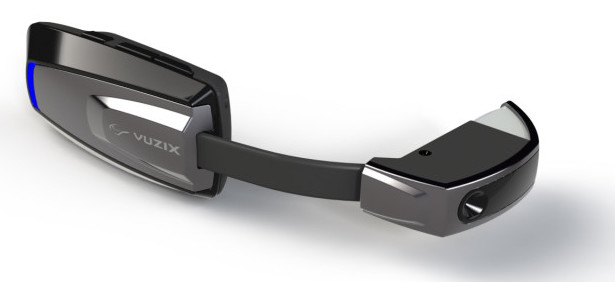The next speaker was Paul Travers, President and CEO of Vuzix, which we have covered a lot in recent months. Vuzix started in 1997 and has been a partner for Kopin for a long time. It is 24% owned by Intel. It was approached by the US government to create HMDs for special forces to replace displays which use a lot of battery power.
The company has moved closer to making products that are more like sunglasses, but we’re not there yet, Travers said. There is a big demand for wearables in the corporate space already, where people are prepared to put up with unfashionable looks etc.
The Vuzix M100 glasses are like having a hands-free Android phone in front of you. Vuzix has shipped “thousands” of displays so far. It is being used in medical applications, where a doctor can be in close contact with paramedics and can help medical staff to decide if an ER visit is needed. This has cut ER trips by 70%.

An investment of $25 m by Intel has allowed a move to Nasdaq. Vuzix is also working with SAP and Travers showed a number of videos of applications. The first was developed for DHL & Ricoh and helped with warehousing.
There are a lot of applications in logistics, helping with picking and packing. This can improve accuracy and speed. Given that, for example, Amazon employs 85,000 in picking in the US alone, the savings are potentially huge.
Today, there are real applications, but the big market is in consumer applications. Conventional optics are really a problem and Google glass has seen a lot of resistance. Waveguides are the best way to go, using microdisplays to inject the light into the edge of the glass. Holograms then direct the light into the eye, but the key point is that the glasses start to “look like Oakleys”.
Travers is clearly very excited by the opportunities for market growth.

